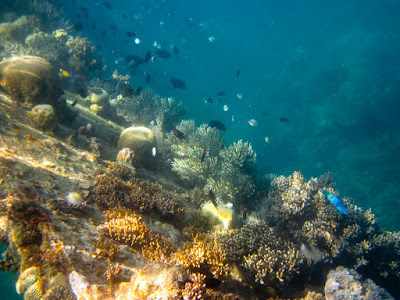One of the greatest things about scuba diving is discovering what lies beneath the deep blue sea. If you’re a photography enthusiast, capturing the vast marine life that one finds when scuba diving is a great way to keep mementos of unforgettable dives.
But for me, finding human artifacts underwater can even be more amazing. It’s eerie, stunning and stimulates the imagination. Can you imagine being able to dive the wreck of the sunken Titanic! Wouldn’t that be awesome? Wreck diving is like uncovering a way to glimpse into the past and wrecks are also teeming with a variety of aquatic life.
Although I’ve been scuba diving in Cebu mostly and while I love the experience I’ve had so far, I find myself wanting to try something more challenging. I confess, I’m a teensy bit on the claustrophobic side and I can’t imagine myself scuba diving in enclosed spaces such as cave diving but I am drawn to the idea of wreck diving.
Last weekend, I decided to explore this more adventurous type of scuba diving. I did some research online as well as talked to an experienced technical diver to check and see what certifications I needed to be able to try wreck diving. I also pleasantly found out that there are great spots for wreck diving right here in Cebu.
So, here, I’ll talk about all the information I’ve gathered and anyone out there wanting to try wreck diving can use this post as jump-off point before trying it out. This is basically Part One of my wreck diving adventure, hopefully I’ll write about Part Two soon where I can actually tell you about my own wreck diving experience.
Here goes.
Let’s talk about some of the more well-known wreck diving spots in Cebu:
The San Juan Wreck in Liloan, Cebu
Back in the year 2000, the MV San Juan ferry sank in Liloan, Cebu due to bad weather. Explosions were reportedly heard and the water pumps were no longer functioning properly. Luckily, no one has hurt and the entire crew made it out safely.
Liloan is about about 45 minutes away from Mactan Island, where you can also find a lot of great diving in Cebu. Resting on its starboard side, the MV San Juan now lies in eternal repose at 30 – 50 ft. underwater and it is said to be in perfect condition. The great thing is the top of ship is within recreational diving limits at around 35 meters or 115 ft. However, penetration within the ship is limited to experienced or technical scuba divers.
The Wrecks in Malapascua, Cebu
When I was told about the variety of wreck diving spots in Malapascua, I was literally salivating with excitement. The technical diver I spoke to told me that there are wreck diving spots in Malapascua that accommodate beginner divers as well as experienced divers.
At only 5 meters of 5 ft., the Lighthouse Wreck in Malapascua is actually a sunken Japanese World War II landing craft. Since the wreck is at very shallow water, it’s a great spot for beginner wreck divers like myself. It’s also an awesome opportunity to practice reel use and running a line for deeper, more challenging wreck dives. Although only located in shallower waters, the aquatic life at this spot won’t disappoint you as you will find banded sea snakes, hermit crabs, yellow-tailed barracudas, pipefish and even octopus.
Another notable shipwreck in Malapascua is the Doña Marilyn Wreck, which sank about 20 years ago. It was a passenger ferry plying the routes of Cebu to Manila and when it sank, it was a great tragedy and many lives were unfortunately lost. Amazingly, the wreck is still in one piece and in great condition. It’s quite a spooky dive, knowing many lives were lost. Fishing nets encrusted with coral drapes the ship giving it an eerie vibe. As it rests 60 – 110 ft. underwater, divers with the right qualifications will love this challenging dive.
Other deeper more challenging wrecks in Malapascua are the Tapilon Wreck (70 – 90 ft) and the Pioneer Wreck (140 – 170 ft) which I also hope to explore one day soon.
What do certifications or training do you need to try wreck diving?
I’ve been told that it’s possible for me to wreck dive since I already am certified in advanced open water diving. If you’ve already taken this or something to its equivalent, then you’re good to go. You may also take a specialized wreck diving, deep diving or technical diving course.
I can’t offer you any tips for wreck diving as of the moment however speaking with divers who have experienced this, it’s always best to dive with a group with experienced technical divers as guides, especially if it’s your first wreck dive.
So, are you ready to take on wreck diving? I am! I’m preparing myself for my first wreck diving experience which would probably happen around next month or so. Watch out for Part Two of my adventure soon.
Image courtesy of: www.lakbaylente.com






0 comments